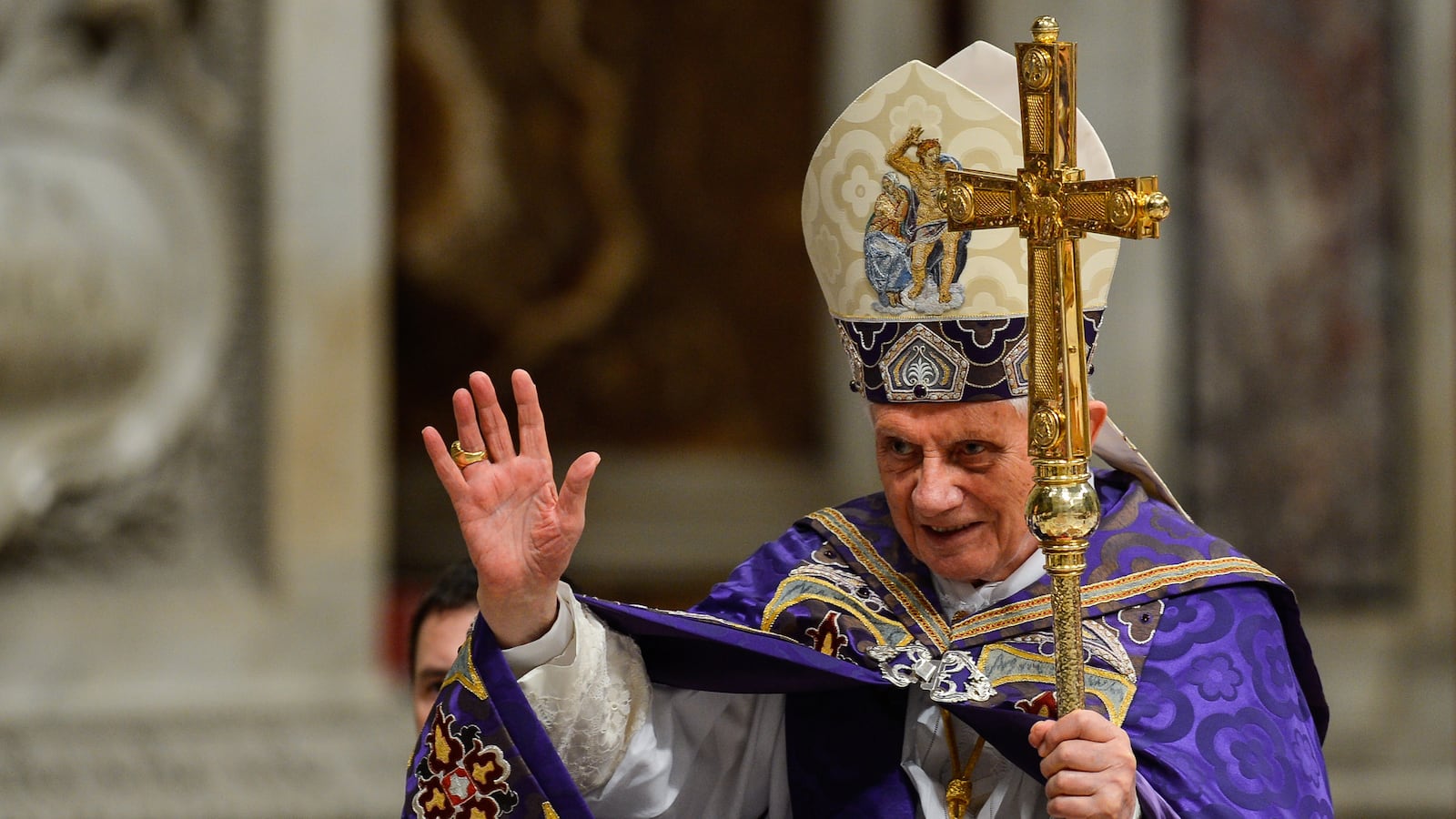Pope Benedict XVI may be the first pope to tweet, but he still isn’t exactly a man of the modern world. “The pope is not the type of person who is checking his iPad or BlackBerry at meetings, so the tweets aren’t going to be spontaneous like those from most other Twitter users,” said Greg Burke, media adviser to the Holy See, at Monday’s launch of the papal Twitter account @pontifex in Vatican City. (That's “pontiff” in Latin.) “Still, it is a significant step towards modernity.”
When the pontiff pushes the send button on his first tweet on Dec. 12, he will be making history along the lines of his predecessors Pope Pius XI, who in 1931 made the first papal radio address, and Pope Pius XII, who in 1964 was the first to conduct a televised mass. “Like other forms of modern technology, Twitter allows a new type of evangelism,” says Monsignor Claudio Maria Celli, the president of the Holy See’s social-communication council. “Which means the pope can reach a new demographic and engage in a dialogue with the faithful.”
Celli pointed to the fact that there are more than 140 million Twitter users, of whom nearly half are between ages 18 and 34, which gives the pope a unique opportunity to reach those on whom his message might normally be lost. The pope opted for Twitter over Facebook because it provides a more immediate conduit for his message, according to Monsignor Paul Tighe, who is also on the social-communications council. Tighe says Facebook is “too personal” and would seem “artificial” to have a page meant to be the pontiff’s, though the Vatican news service does have a regularly updated page. “Facebook requires more work to keep it updated,” he says. “And it just doesn’t seem like the right vehicle for the pope’s message at this time.”
The biggest challenge for the Vatican’s Twitter team will be to parse down the pope’s normally wordy messages to just 140 characters in keeping with the Twitter protocol. And while the pope himself won’t actually be tapping the tweets on a keyboard or smartphone, he will approve each one before it is sent out. Followers are urged to send faith-based questions to the pope under the hashtag #askpontifex that he will answer through his staff. The first tweets will coincide with his Dec. 12 Wednesday audience and start going out around 10 a.m. in Rome.

The pope’s main Twitter account is in English, but he will also be tweeting in Italian, Spanish, German, Portuguese, Polish, French, and Arabic. For the moment, he will not be tweeting in Chinese. His spokesman also said that initially he will not be following anyone because of the difficulty in deciding just whom to follow. “If he follows a cardinal, than why not an archbishop?” Burke says. “You can see where it could get tricky.”
The pope will also likely not retweet other Twitter feeds, and while he will not personally write each tweet, they will be considered his own words. “No one will be putting tweets in the pope’s mouth,” says Burke. “The tweets will be the essence of the pope’s message.”
But wait, there’s more. In conjunction with the Twitter channel, the Vatican announced that next week a free pope app will be available for download for iPhones and iPads (the Android version is still in the works). The pope app will feature live video feeds from strategically placed webcams throughout Vatican City and will stream audiences, special masses, and pope trips along with Vatican news.
These giant steps into the brave new world of the digital age follow the launch of the Vatican’s YouTube channel last spring. Claire Diaz-Ortiz, Twitter’s director for social innovation, who also attended Monday’s launch, tells The Daily Beast that she first contacted the pope’s people last spring about getting the pope online. “As a company it’s important for us to have influential leaders, and the pope is perhaps the most important religious leader in the world who’s joining our platform,” she says. (Another 140-character religious star: @DalaiLama.) But Diaz-Ortiz can’t guarantee that the pope would be immune from cyberbullies and abusive tweets. “There are no moderators on Twitter,” she says. “So it is a risk any individual who has a Twitter account takes.”
She believes the benefits for the pope, including reaching a whole new audience and connecting with his followers on a more intimate level, would surely outweigh any nasty tweets the pope might be subject to. “This will allow more access to the pope than has ever been available,” she says. “The point is to connect with people.” And judging by initial response, the pope will have no problem with that. Before Monday’s launch and the unveiling of the @pontifex Twitter handle, the pope had just 11 followers—mostly cardinals and those on his social-communications team. By the time the press conference ended less than an hour later, he had topped 14,000 followers, thanks only to journalists tweeting from the press conference. By the end of the day, he had already topped 100,000, and that was climbing quickly.






